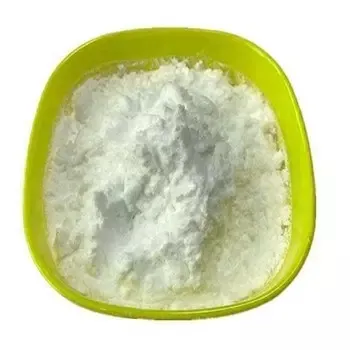Warning: Undefined array key "title" in /home/www/wwwroot/HTML/www.exportstart.com/wp-content/themes/1198/header.php on line 6
Warning: Undefined array key "file" in /home/www/wwwroot/HTML/www.exportstart.com/wp-content/themes/1198/header.php on line 7
Warning: Undefined array key "title" in /home/www/wwwroot/HTML/www.exportstart.com/wp-content/themes/1198/header.php on line 7
Warning: Undefined array key "title" in /home/www/wwwroot/HTML/www.exportstart.com/wp-content/themes/1198/header.php on line 7
- Afrikaans
- Albanian
- Amharic
- Arabic
- Armenian
- Azerbaijani
- Basque
- Belarusian
- Bengali
- Bosnian
- Bulgarian
- Catalan
- Cebuano
- China
- China (Taiwan)
- Corsican
- Croatian
- Czech
- Danish
- Dutch
- English
- Esperanto
- Estonian
- Finnish
- French
- Frisian
- Galician
- Georgian
- German
- Greek
- Gujarati
- Haitian Creole
- hausa
- hawaiian
- Hebrew
- Hindi
- Miao
- Hungarian
- Icelandic
- igbo
- Indonesian
- irish
- Italian
- Japanese
- Javanese
- Kannada
- kazakh
- Khmer
- Rwandese
- Korean
- Kurdish
- Kyrgyz
- Lao
- Latin
- Latvian
- Lithuanian
- Luxembourgish
- Macedonian
- Malgashi
- Malay
- Malayalam
- Maltese
- Maori
- Marathi
- Mongolian
- Myanmar
- Nepali
- Norwegian
- Norwegian
- Occitan
- Pashto
- Persian
- Polish
- Portuguese
- Punjabi
- Romanian
- Russian
- Samoan
- Scottish Gaelic
- Serbian
- Sesotho
- Shona
- Sindhi
- Sinhala
- Slovak
- Slovenian
- Somali
- Spanish
- Sundanese
- Swahili
- Swedish
- Tagalog
- Tajik
- Tamil
- Tatar
- Telugu
- Thai
- Turkish
- Turkmen
- Ukrainian
- Urdu
- Uighur
- Uzbek
- Vietnamese
- Welsh
- Bantu
- Yiddish
- Yoruba
- Zulu
Sep . 24, 2024 03:50 Back to list
Understanding the Risks Associated with Propylene Glycol in Various Applications
The Dangers of Propylene Glycol Understanding Its Risks and Safety Measures
Propylene glycol (PG) is a synthetic organic compound commonly used in a variety of applications, including food processing, pharmaceuticals, and cosmetics. Its versatility and low toxicity make it a popular choice in many industries. However, despite its general safety profile, there are potential dangers associated with its use that both consumers and manufacturers should be aware of.
The Dangers of Propylene Glycol Understanding Its Risks and Safety Measures
In the food industry, propylene glycol serves as a humectant, solvent, and preservative. It is classified as generally recognized as safe (GRAS) by the Food and Drug Administration (FDA) when used in food products. However, excessive consumption of propylene glycol can lead to toxic effects. High levels of PG can accumulate in the body, particularly in individuals with compromised kidney function, resulting in serious health risks such as metabolic acidosis or central nervous system depression.
propylene glycol dangerous

Inhalation of propylene glycol vapors is another area of concern, especially in industrial settings where it may be utilized in aerosolized forms. Exposure to high concentrations can irritate the respiratory tract and may lead to symptoms such as coughing, wheezing, or shortness of breath. Therefore, it is crucial for workers handling propylene glycol in manufacturing or laboratory environments to adhere to strict safety protocols, including the use of personal protective equipment and adequate ventilation.
Furthermore, there are environmental considerations surrounding propylene glycol. While it is biodegradable, large quantities released into water systems can disrupt aquatic life and ecosystems. As with many chemicals, mindful disposal practices and regulatory compliance are vital to minimizing its environmental impact.
To mitigate the risks associated with propylene glycol, it is essential for both consumers and manufacturers to remain informed. Reading product labels, understanding safe usage guidelines, and recognizing potential allergic reactions are critical steps for consumers. For manufacturers, adhering to safety standards, conducting thorough risk assessments, and implementing robust safety training for employees can significantly reduce the likelihood of adverse effects associated with propylene glycol.
In conclusion, while propylene glycol is widely regarded as safe in moderation, it is not without its dangers. Awareness of its potential risks and adherence to safety practices are essential for ensuring the well-being of consumers and workers alike. As industries continue to utilize this versatile compound, vigilance in its use and management will play a vital role in safeguarding health and the environment.
Latest news
-
Certifications for Vegetarian and Xanthan Gum Vegetarian
NewsJun.17,2025
-
Sustainability Trends Reshaping the SLES N70 Market
NewsJun.17,2025
-
Propylene Glycol Use in Vaccines: Balancing Function and Perception
NewsJun.17,2025
-
Petroleum Jelly in Skincare: Balancing Benefits and Backlash
NewsJun.17,2025
-
Energy Price Volatility and Ripple Effect on Caprolactam Markets
NewsJun.17,2025
-
Spectroscopic Techniques for Adipic Acid Molecular Weight
NewsJun.17,2025

